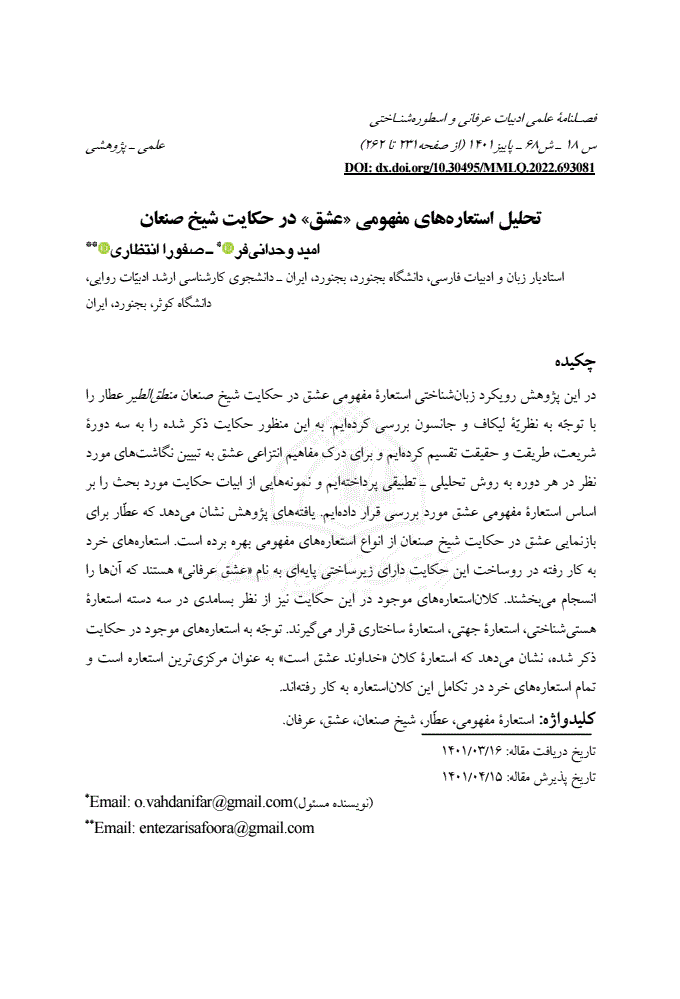چکیده:
در این پژوهش رویکرد زبانشناختی استعارۀ مفهومی عشق در حکایت شیخ صنعان منطقالطیر عطار را با توجّه به نظریّۀ لیکاف و جانسون بررسی کردهایم. به این منظور حکایت ذکر شده را به سه دورۀ شریعت، طریقت و حقیقت تقسیم کردهایم و برای درک مفاهیم انتزاعی عشق به تبیین نگاشتهای مورد نظر در هر دوره به روش تحلیلی ـ تطبیقی پرداختهایم و نمونههایی از ابیات حکایت مورد بحث را بر اساس استعارۀ مفهومی عشق مورد بررسی قرار دادهایم. یافتههای پژوهش نشان میدهد که عطّار برای بازنمایی عشق در حکایت شیخ صنعان از انواع استعارههای مفهومی بهره برده است. استعارههای خرد به کار رفته در روساخت این حکایت دارای زیرساختی پایهای به نام «عشق عرفانی» هستند که آنها را انسجام میبخشند. کلاناستعارههای موجود در این حکایت نیز از نظر بسامدی در سه دسته استعارۀ هستیشناختی، استعارۀ جهتی، استعارۀ ساختاری قرار میگیرند. توجّه به استعارههای موجود در حکایت ذکر شده، نشان میدهد که استعارۀ کلان «خداوند عشق است» به عنوان مرکزیترین استعاره است و تمام استعارههای خرد در تکامل این کلاناستعاره به کار رفتهاند.
In the present research, with a linguistic approach, we examine the conceptual
metaphor of love in the story of Sheikh Sanan from the mystical book of Attar
of Nishapur, Mantiq-ut-Tayr, taking into account the theory of George Lakoff
and Mark Johnson. For this purpose, we have divided the story into three
periods of sharia (law), tariqat (mystical way) and truth, and in order to
understand the abstract concepts of love, we have analyzed all three periods
by using analytical-comparative method. Also, based on the conceptual
metaphor of love, some examples of the verses of the story have been
examined. The findings of the research show that Attar has used various
conceptual metaphors to represent love in the story of Sheikh Sanan. The
micro-metaphors used in the surface structure of the story have a basic
substructure called "mystical love" that gives them coherence. In terms of
frequency, the macro-metaphors of the story are placed in three categories:
ontological, orientational and structural metaphors. If we pay attention to the
metaphors in the story, it becomes clear that the macro-metaphor "God is love"
is the most central metaphor and all micro-metaphors have played a role in the
evolution of this macro-metaphor.

(پژوهیار,
,
,
)

